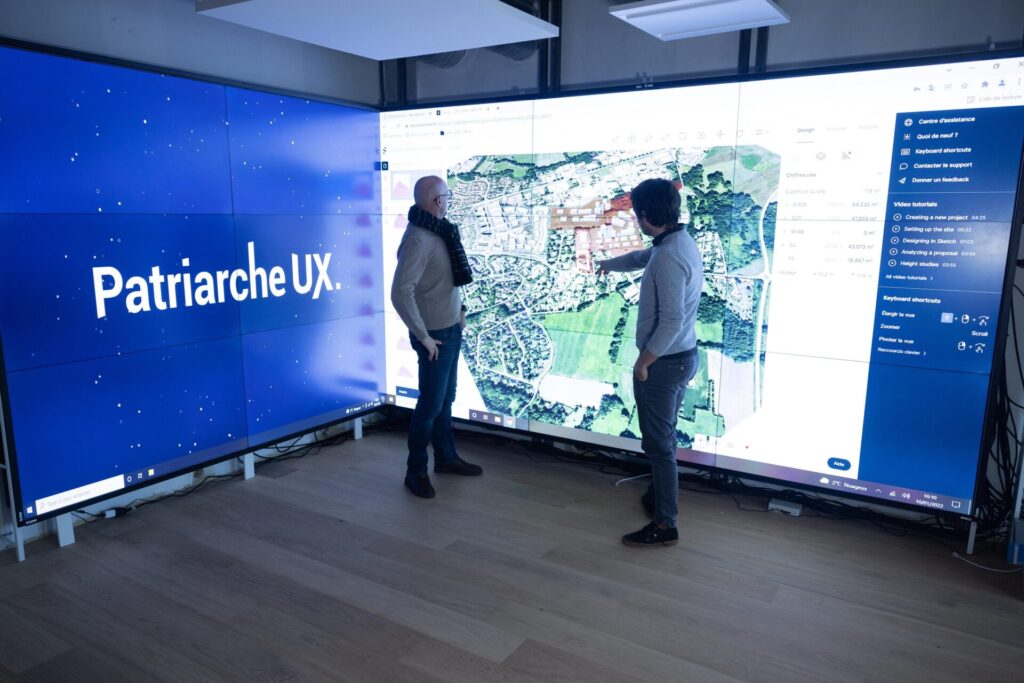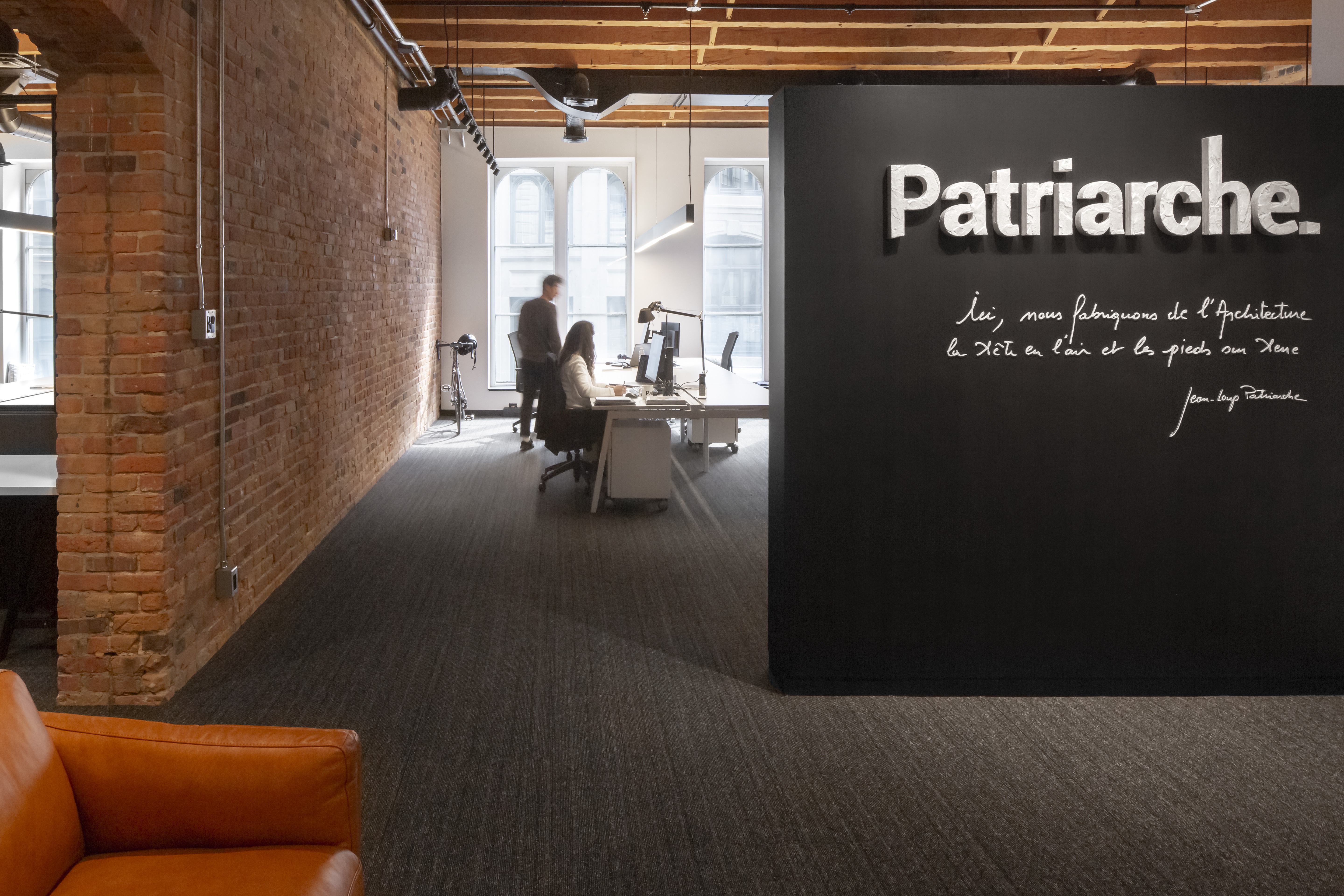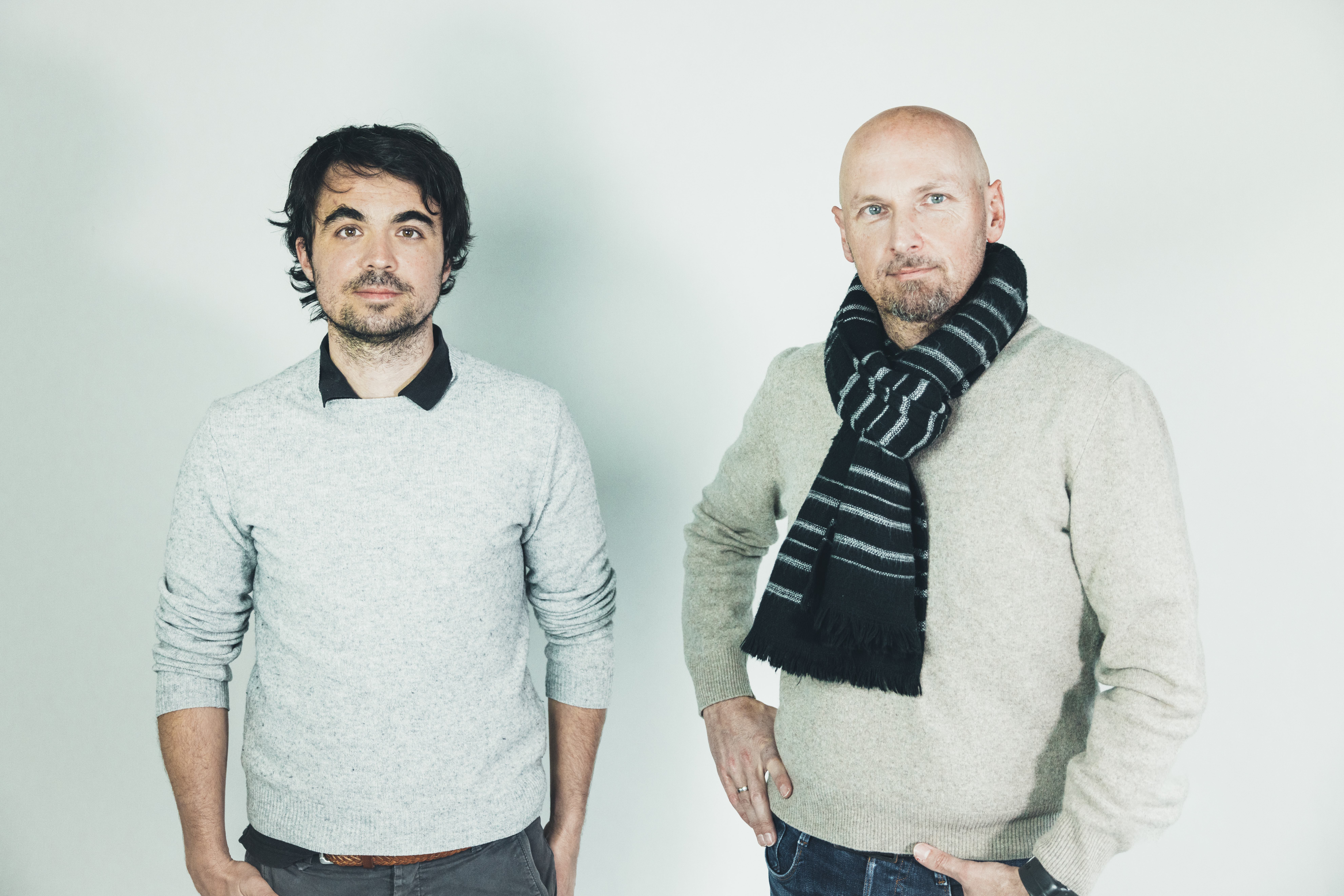
Executive summary
- Patriarche is a unique and multidisciplinary organization focused on innovation, bringing together multiple professions covering all stages of programming / urban design, construction, operation and maintenance of a project.
- The need to be at the forefront of innovation requires Patriarche to be constantly on the watch for new technologies, while making the most of all the tools available within the agency.
- When using Autodesk Forma, the urban planning division brings a wealth of essential information in constant evolution to a whole series of design stages.
- Intuitive and easy to understand, Forma won over the various professions within the agency, thanks to its accessibility, stability and ability to deliver realistic data, comprising potential density, mix, coverage, spatial distribution, key constraints, planning and urban design, with correct area metrics in a reduced timeframe.
- Forma enables the development of iterative solutions in record time, which reinvents the way Patriarche designs its projects.
- Offering new perspectives to find innovative new design options, Forma has become a real game-changer for feasibility studies, for example reducing the time from 2 days with a traditional method to 1.5 hours with Forma.
Patriarche opens up the possibilities of a project
As a multidisciplinary architecture group focused on innovation, Patriarche champions the idea of an augmented architecture, combining the knowledge and skills of disciplines related to architecture while taking advantage of the collective intelligence specific to its ecosystem. To offer its customers an experience centred on their uses and needs, Patriarche offers a unique model integrating all the resources necessary for the construction, promotion, operation and organization of intelligent, conscious, responsible and long-term projects.
A global company with offices in France, Switzerland and Canada, the group has nearly 400 employees and includes 9 agencies as well as several interdisciplinary subsidiaries. Thanks to the host of business skills on offer, the group carries out its projects independently or through international collaborations. These skills require specific tools and a specific organization to ensure that the requests and interactions between the various internal departments, subsidiaries and customers are as smooth as possible.

Uses, expectations and constraints that disrupt working methods
As uses evolve with society, spaces intertwine more urban functions and diversified activities; more and more housing, offices, shops and industrial activities coexist in the same area. With urban planning and technological constraints more interconnected than ever before, architecture must evolve and mix on a grander scale. A real decision-making tool, 3D modeling improved by data has become essential in urban planning and architecture studies. Especially since analyses of living qualities now help architects and urban planners make better decisions. The implementation of new technologies therefore becomes a competitive asset and a development factor for any agency.
“Digital transformation is at the heart of all industries and of course, this concerns also real estate as well as construction. On the one hand, because methods and tools are evolving (BIM, 3D, AR and VR made possible by the computing power of machines and new technologies); on the other hand, because our uses and ways of working are changing. Aware of these transformations, we are integrating digital tools earlier and earlier and in a diversified way into our design method; not for competitive or “replacement” purposes, but rather as an opportunity to take advantage of collective intelligence, and our ability to integrate more requirements into the proposed urban or architectural response. Our approach, quite simply, aims to respond better to the intersecting challenges of environmental transition, social diversity, collective well-being and more ethical economic models, by promoting a renewed practice of architecture that we describe as “augmented,” explains Thibault Nugue, partner in the Patriarche group.
“In the search for innovation and optimization on how a building is used, whatever its purpose (tertiary, industrial, housing, health, etc.), using digital solutions – and their dedicated teams – we develop our projects in an open manner and in partnership, by accelerating, enhancing or re-questioning the development process. The use and development of suitable data collection and processing tools developed internally by our digital subsidiary, Patriarche UX, or the use of tools offered by our partners like the augmented spatial projection and drawing methods (BIM, AI, etc.), are all interconnected processes included in the group’s digitalization and innovation strategy,” adds Thibault Nugue.
The combined power of digital and data to develop solutions adapted to new uses
Michaël Fauchet, an architect by training, has a cross functional role as BIM Manager at Patriarche. In order to improve the smooth running of projects, he facilitates, supports and trains his teams to help them use the BIM management methods most appropriate for their projects (agreements, BIM charters, pre-syntheses, implementation of GED, relationship with client partners, design office, companies, etc.).
At the same time, he closely monitors technological developments to identify new digital tools adapted to all businesses of the organization in order to develop the processes, the workflows, the methods of communications. By identifying the solutions likely to be the best fit for the architectural workflow, he evaluates the tools and their benefits, helps with deployment and supports their implementation within the project teams. Michaël Fauchet: “The group is constantly trying to find new tools. After using Allplan, we switched to Revit for our architecture, structure and flow. More open to other software but also to APIs, Revit, through its ecosystem, makes it possible to better manage exchanges. The challenge is to make these different software worlds communicate with each other in view of the project time constraints, which can sometimes cause bottle necks.”
“In the same logic, Forma appeared as obvious in our strategy because it allows the integration and centralization of information in the early stages of projects,” explains Michaël Fauchet.
Answering the current business issues and project developments, Forma’s functionalities, and the ability to produce and manipulate data in the early stages of planning proved decisive in Patriarche’s adoption of Autodesk Forma.

The urban planning division, the first step of a construction project
Comprising around ten employees with various backgrounds (urban planners, landscape architects, architects, consultant programmers), the urban planning team, to which Etienne Guyot, OPQU urban planner and engineer belongs, comes in the early stages of urban and architectural programming, working on the implementation of real estate strategy and feasibility studies. The team works on many subjects with the agency’s subsidiaries, local authorities, industrial operators or real estate developers, playing an advisory role at several levels.
At the same time, their urban planning work includes developing master plans for entire districts, providing solutions for building locations, landscape and spatial programming and producing Real Estate Master Plans (SDI). Thus, the team has developed a pragmatic and seamless approach to programming, by linking together spatial issues, practices and uses.
Using established architecture software such as Revit, AutoCAD, Allplan and SketchUp for for volume studies is extremely time-consuming as these were not made with early stage planning in mind. Today, from the first customer request, the data linked to the need and to the site itself, using Forma makes it possible to deliver realistic volume studies in terms of measurement. By generating this data and making it available for later stages, Forma proves to be a powerful tool to smooth out the starting stages and unprecedented time savings.

Forma provides versatility in record time
Easy and intuitive
The proposal to integrate an AI software offering time benefits was very well received by the urban planning division, however it was the software’s ergonomics and ease of use that won them over. Also Forma’s interoperability with other software (thanks to data compatibility) enhanced the whole process.
A time-saving software that shakes up the way Patriarche works
The efficiency and accuracy of the data delivered by Forma are appreciated because tasks that sometimes took several days on a traditional software can now be carried out in a few hours (2 days with a traditional method vs 1h30 with Forma), the outcome is, easily reusable and formatted images, that can be used on other software (such as InDesign for example).
A stable online tool accessible from anywhere
Requiring just a simple user login, the platform was quickly deployed within the teams. This software also offers the possibility of being used from anywhere: during a customer meeting or during a train journey, for example. Recording any action prevents data loss. In the end, the team appreciated that they could work without stress, in better conditions and with time savings.
“Thanks to its cloud-based approach, the collaboration and communication between users is facilitated during feasibility studies. This software offers extremely precise digital traceability and restores all the modifications in the history,” explains Etienne Guyot, head of the urban planning division at Patriarche agency. “It is a very intuitive, smooth and easy-to-use software that gives quick and visual results. Forma meets the need and brings satisfaction to whoever uses it. The user experience and the fact that it’s cloud-based make it a super smooth tool that we gladly use.”
The ultimate solution to challenge early stage planning
While considering the different urban functions, the data generated makes it possible to have a clear view of the building areas and show the reasons why it is better to exclude certain options that don’t fit into the project. The Design function offers a simplified iterative approach, which enables the team to analyze and compare projects in real time, according to various hypothesis. With the time savings, the team can focus on other tasks that require more attention and time.
Etienne Guyot adds, “When we submit a project, whether to the client, to professionals or to the public, it is essential to give them some background, in order to explain some of the choices made, because sometimes the decisions are not necessarily motivated by pragmatic reasons. By retracing history, Forma facilitates the writing of the story and the argumentation of certain urban planning choices.”
Forma at the forefront of an environmental approach to urban planning
Patriarche is keen to test Forma’s bio-climatic approach based on views, acoustics, wind or sun; the analyses are tools which the urban planning division sees potential in because they enable an environmental approach to urban planning. Etienne Guyot is particularly convinced that this approach will be increasingly required during the early phases of future projects, and sees the union between Patriarche and Forma as a marriage of convenience thanks to the shared philosophy of the two organizations in terms of urban innovation and approach.
Main image: Etienne Guyot and Michaël Fauchet zoom in on a Forma project on the big screen.
All images courtesy of Patriarche.